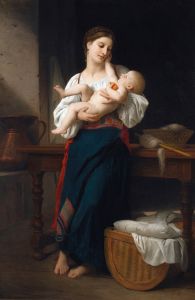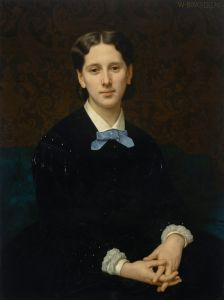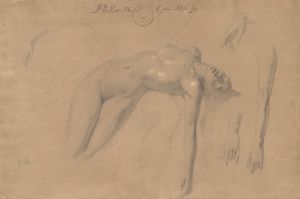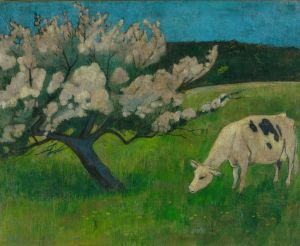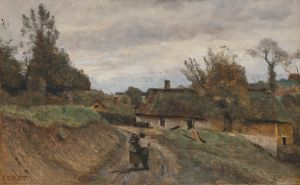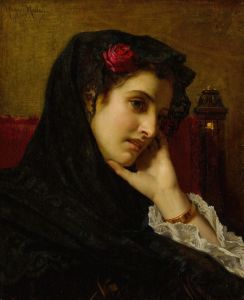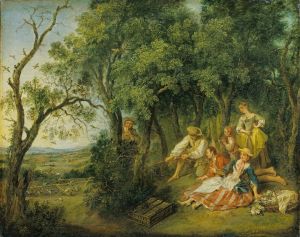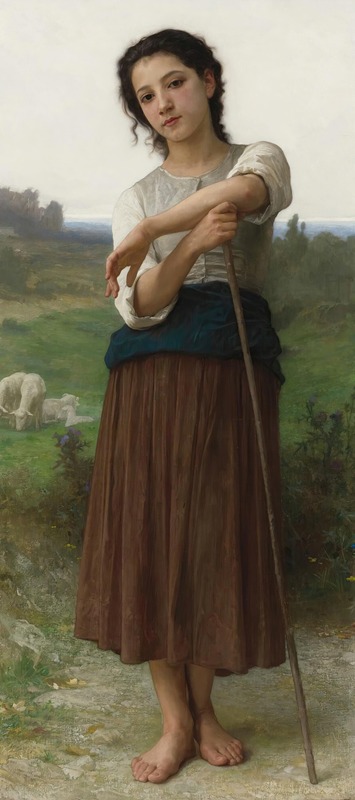
Jeune bergère debout
A hand-painted replica of William Bouguereau’s masterpiece Jeune bergère debout, meticulously crafted by professional artists to capture the true essence of the original. Each piece is created with museum-quality canvas and rare mineral pigments, carefully painted by experienced artists with delicate brushstrokes and rich, layered colors to perfectly recreate the texture of the original artwork. Unlike machine-printed reproductions, this hand-painted version brings the painting to life, infused with the artist’s emotions and skill in every stroke. Whether for personal collection or home decoration, it instantly elevates the artistic atmosphere of any space.
"Jeune bergère debout" (translated as "Young Shepherdess Standing") is a painting by the renowned 19th-century French artist William-Adolphe Bouguereau. Bouguereau, born on November 30, 1825, in La Rochelle, France, was a prominent academic painter known for his realistic genre paintings and his meticulous attention to detail. He was a leading figure in the academic art scene of his time, celebrated for his technical prowess and his ability to depict the human form with grace and precision.
The painting "Jeune bergère debout" exemplifies Bouguereau's mastery in portraying rural and pastoral themes, a common subject in his oeuvre. The artwork features a young shepherdess standing, likely in a pastoral setting, which aligns with Bouguereau's frequent exploration of idyllic rural life. His works often romanticized peasant life, presenting an idealized vision of the countryside that was popular among the urban bourgeoisie of the time.
Bouguereau's technique is characterized by his smooth brushwork and the luminous quality of his figures, achieved through his adept use of light and shadow. In "Jeune bergère debout," these elements would be expected to highlight the innocence and purity of the young shepherdess, a recurring motif in his paintings. The artist's ability to render textures, such as skin, fabric, and natural elements, with remarkable realism is evident in this work, as in many others.
Throughout his career, Bouguereau was both celebrated and criticized. While he enjoyed considerable success and was a dominant figure in the French art establishment, his work was often dismissed by the avant-garde artists of the time, who sought to break away from academic traditions. Despite this, Bouguereau's paintings were highly sought after by collectors and institutions, and he received numerous accolades, including membership in the prestigious Académie des Beaux-Arts.
"Jeune bergère debout" reflects Bouguereau's interest in themes of youth and innocence, often depicted through young female figures in serene landscapes. This thematic focus can be seen as part of a broader 19th-century artistic trend that idealized rural life and the simplicity of pastoral existence, offering an escape from the complexities of modern urban life.
The painting is part of Bouguereau's extensive body of work, which includes over 800 paintings. His legacy is marked by his influence on academic art and his role in shaping the tastes of his era. Today, Bouguereau's paintings are appreciated for their technical brilliance and their contribution to the canon of 19th-century art. His works are housed in numerous museums and private collections worldwide, continuing to attract admiration for their beauty and craftsmanship.
In summary, "Jeune bergère debout" is a testament to William Bouguereau's skill as a painter and his ability to capture the essence of his subjects with elegance and precision. The painting remains a significant example of his contribution to the art world, embodying the themes and techniques that define his celebrated career.





